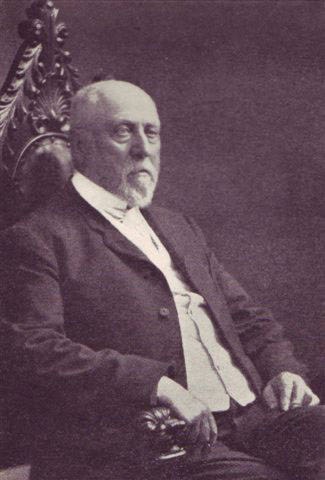Crime, corruption, charlatans, ghosts, shipwrecks, love, tragedy and adventure: all were fodder for D.W. Higgins’ pen as a working journalist and as an author in retirement.
The fleeting presence of a newly-appointed Liberal Speaker of the House following May’s election prompted some political historians to recall previous Speakers, among them D.W. Higgins.
He’s remembered by some not for his eight years of service but because he supposedly posed for his official portrait, the one that hangs in the Legislature’s Speaker’s corridor, posthumously.
However, as current Clerk of the House Craig James explained to Times-Colonist political columnist Les Leyne, his tongue firmly in his cheek, it’s pure myth that a just-deceased Higgins was “dressed, propped up” and photographed. “I’m here to tell you that he was not dead then,” declared James, “although he looked like it, but he is now, having served as Speaker from 1890 to 1898.”
I’ve introduced D.W. (note the plural in David Williams) Higgins numerous times in earlier Chronicles; not for his political career but for his having been one of the province’s earliest and best journalists. More than a century after his death his two books, The Mystic Spring and The Passing of a Race, are highly prized collectors’ items. That’s because they offer unique insight into some of the most colourful characters and events that played on the provincial stage from the time of the 1858 Fraser River gold rush to the turn of the last century.
Originally a journeyman printer, it was as a reporter and publisher that Higgins came to meet and to know most of the bigger than life characters he wrote about during his retirement in a series of newspaper articles that were later published in the two books cited above. It all began in 1858 with the Nova Scotian’s arrival in San Francisco and his encounters with the flotsam and jetsam of humanity from around the world.
Then a new strike, this one on “Fraser’s” River, and Higgins followed it to Fort Yale and a short stint as an express agent. Not for him a gold pan and pick: it was on to Victoria and a job as a reporter for Amor de Cosmo’s Colonist. There he did his mining with his pen, in the saloons and salons of the provincial capital.
Having worked his way up to owner and publisher, politicians sought him out, police officers and saloonkeepers were his confidantes, as were leading merchants and hotel proprietors who likely sought to gain information as well as to share it, and newcomers fresh off the boat from wherever also submitted to his queries. Often late into the night, Higgins trolled the town’s watering holes in search of those few stories that his many contacts hadn’t brought to him.
When the tragic Tom Schooley was sentenced to hang for shooting his father-in-law, it was Higgins who interviewed him in his death cell. When city detective John Taylor solved the mystery of ‘the haunted man,’ Higgins was there. When former Haida chieftain ‘Captain John’ and his brother died in a blaze of gunfire while trying to break out of the city’s police barracks (jail), Higgins was on the scene within minutes to take vivid mental images of a scene that he’d graphically recreate for his readers, half a century after. His are detailed true tales of crime, corruption, charlatans, ghosts, shipwrecks, love, tragedy and adventure, all of which were fodder for his pen as a working journalist and, finally, as an author in retirement.
Not all historians view him as respectfully as I do. In a discussion I had with the late local author and historian David R. Williams, he dismissed Higgins as a “damn liar”. Williams was criticizing Higgins’ recreation of dialogue so many years after the fact — what some today call ‘creative’ or ‘narrative’ non fiction — for which he was called by one admirer, B.C.’s own Bret Harte.
Of course, Higgins hadn’t made shorthand notes of those early conversations and he was relying on memory; of course, he exercised literary licence in telling his tales. That said, however, I’m convinced that his narratives are 90 per cent factual. I know they’re 100 per cent entertaining.
Admittedly, his prose, by today’s standards, is florid: long sentences and flowery description with over-the-top, maudlin sentiment that was so popular in the Victorian era. This, in my mind, only makes him that much more authentic in the sense of his having been a contemporary to the colourful stories he tells. He has the charm and ambience of period furniture in an old home, of a lovable character in a classic black and white movie.
Higgins isn’t just a storyteller, he’s integral to his stories — often an active participant — who vividly describes people’s appearances, recalls their speech patterns, their habits and their quirks, all from firsthand observation — something no modern-day historian, myself included, can emulate.
I’ve enjoyed reading his books and his reminiscences in the Colonist several times then retelling some of them to my own readers. Don’t be surprised if I again reach into my treasure chest of D.W. Higgins files for yet another tale as originally told by a master storyteller and, to some degree, participant.
And please be assured that when he posed for the photograph that accompanies this column, he was alive and well. I think.
